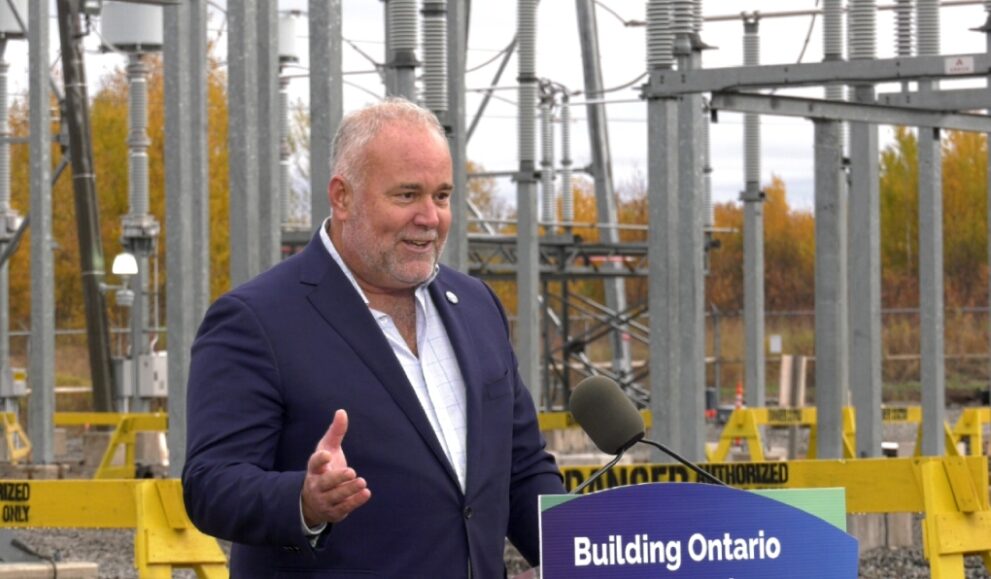New energy infrastructure will power new homes, businesses, transit and electrification
TORONTO – The Government of Ontario and City of Toronto are working together to plan for the city’s growing electricity needs, driven by the work both governments are doing to build new homes, transit and attract new investments.
“Building new electricity infrastructure, especially in a busy and growing city like Toronto, can take more than a decade to develop and deploy, so it’s critical we start planning early so we can put shovels in the ground sooner,” said Todd Smith, Minister of Energy. “Toronto is critical to Ontario and Canada’s economic success and our government is ensuring the city has the power it needs for new homes, transit and job creators.”
To date, growth in Toronto has been supported by existing transmission lines, energy efficiency programs and strategically located natural gas generation assets – like the Portlands Energy Centre – which keeps the lights on in the city on the hottest and coldest days of the year. Powering future growth and reducing reliance on natural gas generation will require new infrastructure that could take more than a decade to develop and deploy.
“Toronto is growing – we’re building new housing, transit and community spaces – all of which are going to need more power,” said Mayor Olivia Chow. “This is a wonderful example of how the province and city can come together to listen to the people of Toronto and build the clean energy infrastructure we rely on every day.”
A new Integrated Regional Resource Plan for Toronto, which will be developed by the Independent Electricity System Operator (IESO) following public input, will lay out the plan to build more energy infrastructure in the city to support growing demand. As first outlined in Powering Ontario’s Growth, the plan could include a third transmission line into the downtown core – such as on an existing transmission right of way or a new option like a submerged cable. It could also include new small-scale local generation and storage options – including rooftop solar and batteries – and new or expanded energy efficiency programs.
To inform the new Integrated Regional Resource Plan, this month the government has asked the IESO to launch a public engagement process. Over the next year, this process will include opportunities for the public to learn more about and provide input on the electricity demand forecast for Toronto and the options to meet that demand. Starting this planning process early will help to further Ontario’s clean energy advantage, ensure reliability, and position the province and city to put shovels in the ground sooner on critical infrastructure projects.
“Toronto is growing, and so is its demand for electricity. Our city’s current infrastructure needs to grow to keep pace,” said Lesley Gallinger, President and CEO of the IESO. “Expanding our electricity system will require a variety of solutions and we’ll need everyone’s involvement as we develop practical approaches for this transformation. That’s why we are pleased to invite Torontonians to this conversation about how we can grow our electricity system to support our growing communities.”
Planning for Toronto’s energy future is just one part of Powering Ontario’s Growth, the government’s pragmatic plan which outlines the actions the province is taking to meet growing energy demand and reduce emissions by expanding Ontario’s reliable, affordable and clean grid, including:
- Nuclear Energy – Advancing reliable, affordable and clean nuclear power through pre-development work at Bruce Power, four small modular reactors at Darlington and supporting OPG’s plan for refurbishing the Pickering Nuclear Generation Station.
- Competitive Procurements – Acquiring 4,000 MW of electricity generation and storage and launching more competitive procurements for non-emitting electricity resources including wind, solar, hydroelectric, batteries and biogas.
- New Transmission Infrastructure – Designating and prioritizing transmissions lines in Southwestern, Northeastern and Eastern Ontario that will power job creators including EV and EV battery manufacturing and clean steel production.
- Keeping Costs Down – Launching new energy efficiency programs on January 1, 2025, building on the government’s $342 million expansion of existing energy efficiency programs which are helping families and businesses reduce their electricity use so they can save money on their energy bills.
Families and businesses in Toronto and across the province can participate in existing energy efficiency programs today to help reduce electricity consumption and lower their bills and emissions. Through Peak Perks homeowners and renters can receive a $75 financial incentive by enrolling their thermostat and automatically reducing their air conditioning by no more than 2 degrees Celsius up to 10 times a year. Through the Energy Affordability Program income-eligible households can also receive energy efficient appliances like refrigerators, air conditioners, air source heat pump and new insulation.








